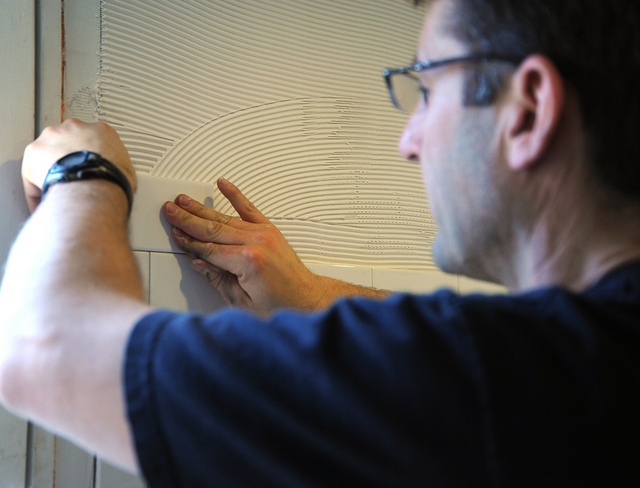So you’ve managed to save up enough cash for that much needed kitchen renovation but you’re a little unsure if you’ve got what it takes to lay the new tiles by yourself. Well, there is no denying that this is no small task, but with the right advice on preparation techniques, your kitchen tiles should be down in no time, leaving you free to enjoy your newly modernised scullery.
Where Do I Start?
The first step will usually be removing any existing tiles, although in some circumstances it may be possible to simply place the new tiles on top, depending on the quality of the old ones and the weight of your new purchase. Always be sure to consider your surroundings. Dust sheets can provide protection for yourself and your worktops, whilst also ensuring no damage is caused to any existing appliances.
If you’ve chosen to remove old tiles first, this can be successfully achieved by using a grout removal tool from your local hardware store, a utility knife or even a wallpaper scraper. Just make sure you apply pressure to the tile with your free hand, to ensure it doesn’t fall and cause injury.
What Next?
Next up, you need to calculate the amount of material you need and plan the layout. It is always advisable to purchase about 10% more than you think you’ll require, this allows for mistakes and breakages. Simply measure the height and width of your chosen area, then multiply these numbers together to find out the square meter measurement – this should be sufficient information for whichever retailer you choose to visit.
What Tools Will I Need?
Although tiling is a relatively simple job, it is advisable to spend some time making sure you’ve got the right tools, as this can speed up the whole process considerably.
Here’s what you need:
- Spirit level
- Hammer
- Nails
- Tape Measure
- Tile Marker Pen
- Square Notched Trowel (for applying adhesive)
- Grouting Float
- Tile Cutter
It would also be sensible to invest in a pair of protective goggles, as tile cutting usually creates a substantial amount of dust, and a trip to hospital is certain to slow the whole process if you get something in your eye.
Is It Easy To Fix The Tiles In Place?
The simple answer is yes. If you’ve done your homework, completed your preparations and purchased the correct tools, tiling can be an extremely quick and satisfying job. After applying the adhesive, its just a case of firmly placing your tiles on the wall and allowing the adhesive to set. You can also pick up some tile spacers to ensure your work looks neat and tidy.
Hopefully this information will now allow you to achieve a great look without having to pay hundreds of pounds for a professional to do the job. However, If you still have concerns, don’t worry too much, the staff at your local tile shop will be happy to answer any further questions.
Good luck with renovation, with this advice, it is certain to look fantastic.







